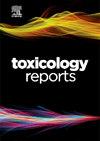Therapeutic effects of NAC and CoQ10 on aluminium phosphide poisoning as an adjuvant therapy: A Pilot study
Q1 Environmental Science
引用次数: 0
Abstract
In aluminium phosphide (AlP) poisoning, death is mainly due to acute heart failure. There is some evidence showing that N-acetylcysteine (NAC) and coenzyme Q10 have antioxidant and cardioprotective effects. This study investigated a new approach for treating acute AlP poisoning by using NAC and Co-Q10 as adjuvant therapy.
Subjects and methods
The study design was a retrospective-prospective study. It was conducted in the poisoning unit of Kafer Eldwar General Hospital. Sixty patients with acute aluminium phosphide poisoning were included. The patients were divided into two groups. The first group (standard protocol) considered the control group received the standard supportive care, and their data were collected from the medical records. The second group (new protocol) in addition to the standard supportive care received the NAC and CoQ10 regimen, and all data were collected in a specially designed sheet.
Results
The results showed that the highest percentage of patients in both groups were aged 18–25, followed by those under 18, and females outnumbered the males. The systolic (SBP) and diastolic (DBP) blood pressure showed significant improvement in the new protocol group. A significant statistical difference was found between the two groups regarding mechanical ventilation (p = 0.015), where mechanical ventilation was used in 20 % of patients in the new protocol group and 50 % in the standard group. Regarding the outcome of patients, the survival rate reached 73.3 % upon using the new protocol, compared to 50 % who received the standard protocol.
Conclusion
The data imply that further investigation in using the NAC and CoQ10 regimen is warranted. It gave an improvement of the survival rate and decrease the need for mechanical ventilation in AlP
NAC和辅酶q10作为辅助治疗对磷化铝中毒的治疗效果:一项初步研究
在磷化铝(AlP)中毒中,死亡主要是由于急性心力衰竭。有证据表明,n -乙酰半胱氨酸(NAC)和辅酶Q10具有抗氧化和心脏保护作用。本研究探讨了NAC联合辅酶q10辅助治疗急性AlP中毒的新途径。研究对象和方法本研究设计为回顾性-前瞻性研究。这是在Kafer Eldwar总医院的中毒科进行的。急性磷化铝中毒60例。患者被分为两组。第一组(标准方案)认为对照组接受标准支持性治疗,其数据从医疗记录中收集。第二组(新方案)在标准支持治疗的基础上接受NAC和CoQ10方案,所有数据收集在专门设计的表格中。结果两组患者中18 - 25岁患者比例最高,18岁以下患者比例次之,且女性多于男性。新方案组收缩压(SBP)和舒张压(DBP)有显著改善。两组在机械通气方面有显著的统计学差异(p = 0.015),新方案组20 %的患者使用机械通气,标准组50 %的患者使用机械通气。关于患者的预后,使用新方案后的生存率达到73.3 %,而接受标准方案的患者为50 %。结论NAC和辅酶q10方案的应用值得进一步研究。它提高了AlP患者的存活率,减少了对机械通气的需求
本文章由计算机程序翻译,如有差异,请以英文原文为准。
求助全文
约1分钟内获得全文
求助全文
来源期刊

Toxicology Reports
Environmental Science-Health, Toxicology and Mutagenesis
CiteScore
7.60
自引率
0.00%
发文量
228
审稿时长
11 weeks
 求助内容:
求助内容: 应助结果提醒方式:
应助结果提醒方式:


